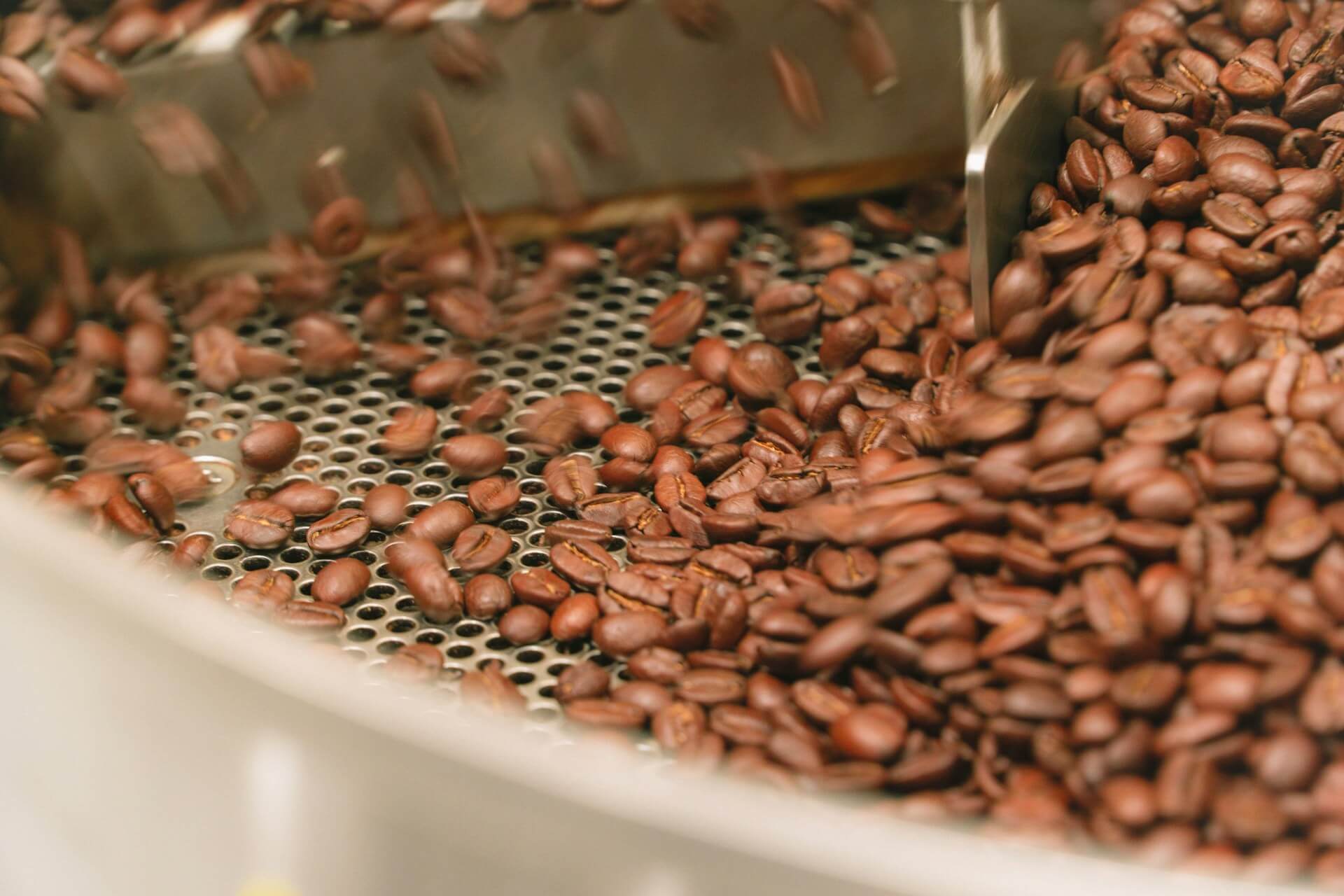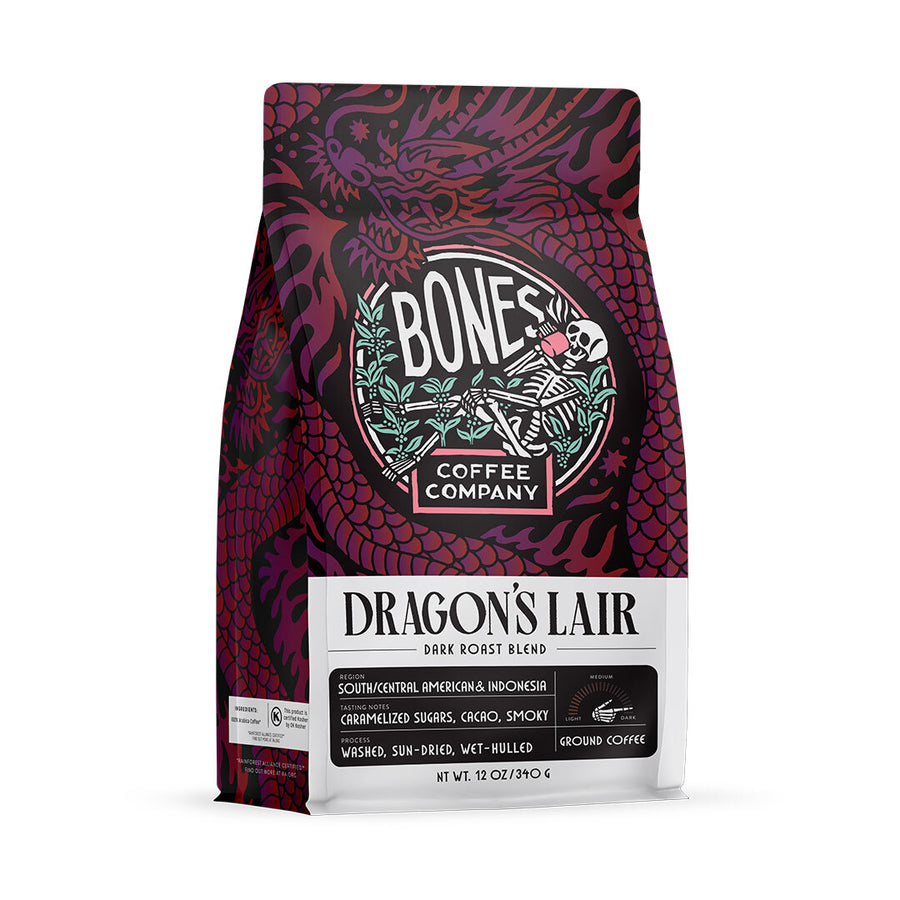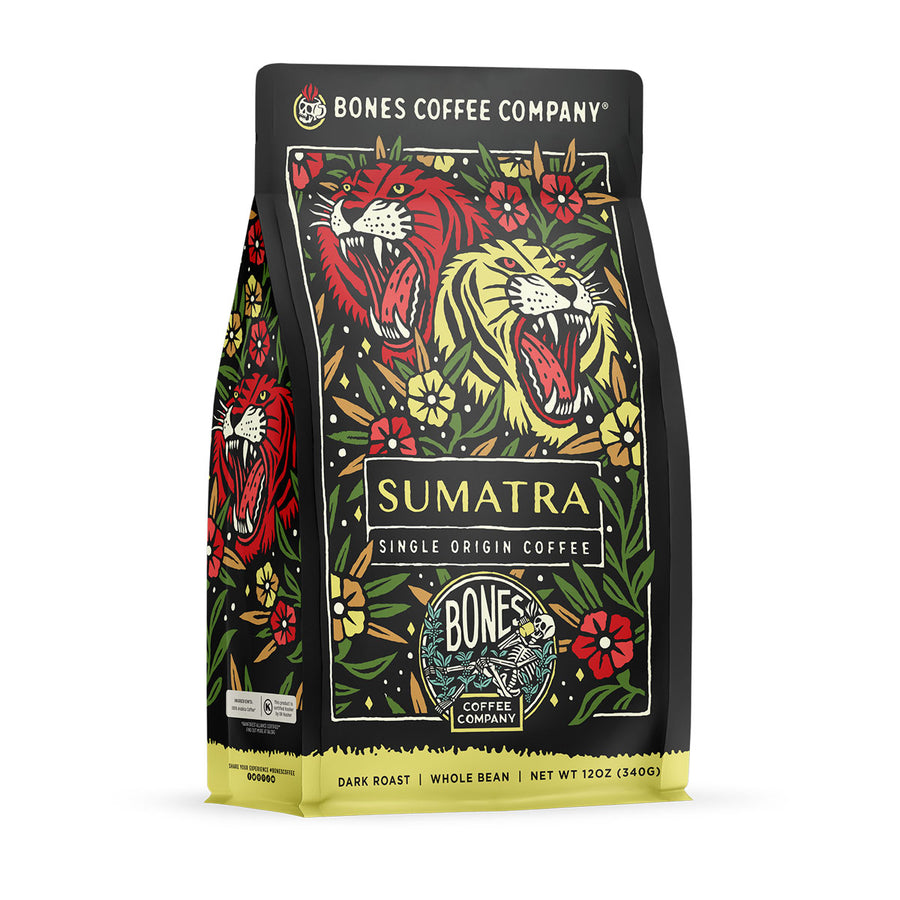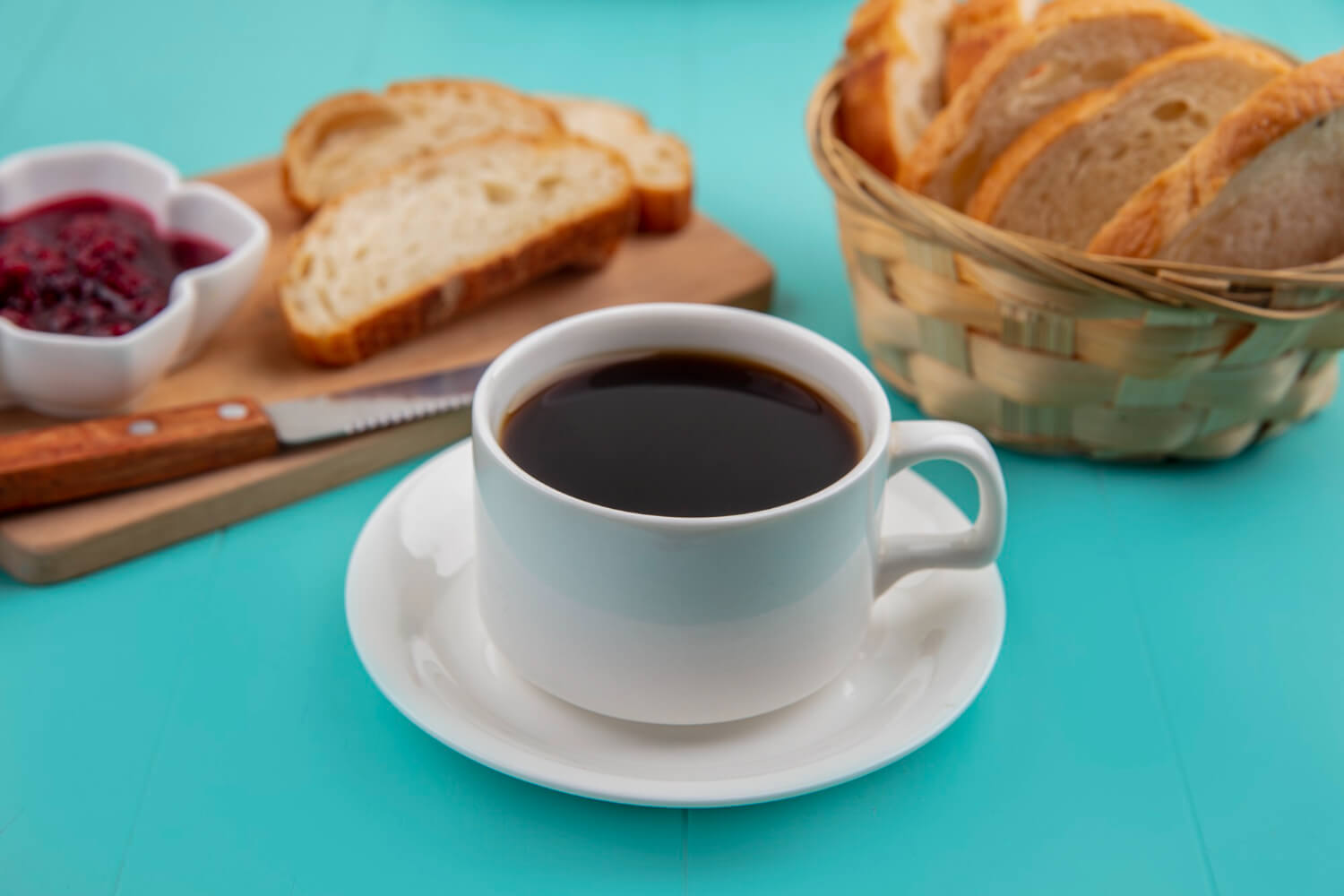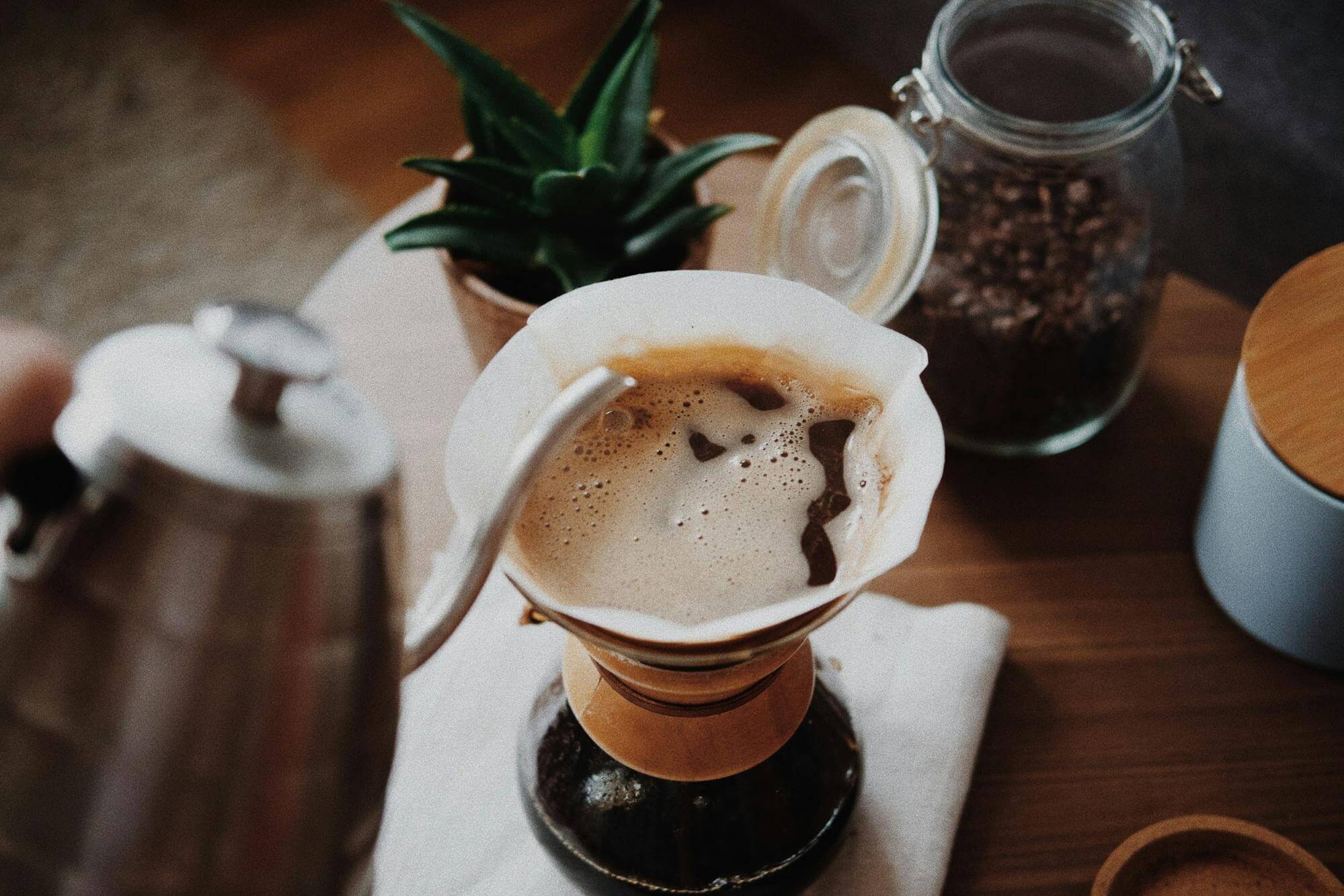Roasting raw coffee beans at home is an exciting journey into the heart of coffee craftsmanship. It offers enthusiasts the chance to unlock unique flavors and aromas tailored to their personal tastes.
Whether you're a seasoned coffee aficionado or a curious beginner, mastering the art of roasting your own coffee beans can transform your daily brew into a delightful and aromatic experience.
Get ready to explore roasting methods and discover how to create your perfect cup from scratch!
What Type of Roaster Should You Use?
Choosing the right home coffee roaster is akin to selecting the perfect instrument for a symphony of flavors. Each type of roaster offers a unique approach to unlocking the potential of your unroasted coffee beans, and understanding these differences can elevate your roasting experience.
Types of Coffee Roasters
- Air Roasters: Like a popcorn popper, use hot air to roast beans. They offer quick roasting times and even heat distribution, making them ideal for those who enjoy a bright, clean cup with pronounced acidity.
- Drum Roasters: Tumble beans in a rotating drum heated by gas or electricity. This method provides greater control over temperature and roast profile, making it perfect for enthusiasts seeking a deeper, more complex flavor.
- Stovetop Roasters: Involve manually roasting beans using a pan or pot on a stovetop. They are a cost-effective option that provides a hands-on experience, ideal for beginners or those experimenting with small batches.
- Oven Roasters: Use a conventional oven, where beans are roasted on a baking sheet. This method is accessible and requires no special equipment, making it great for casual roasters exploring basic techniques.
- Fluid Bed Roasters: Function similarly to air roasters but feature a more advanced design. They provide consistent results and are easy to use, making them a solid choice for home roasters who value convenience and reliability.
Factors to Consider
- Batch Size: Determine how much coffee you plan to roast at once. Drum roasters typically handle larger batches, while air and stove top roasters are better suited for smaller quantities.
- Control and Precision: If you desire precise control over the roast profile, drum roasters offer adjustable settings for temperature and time. Air roasters, while less precise, provide a straightforward approach for those new to roasting.
- Flavor Preferences: Consider the flavor characteristics you wish to highlight. Air roasters tend to accentuate acidity and brightness, whereas drum roasters can enhance body and depth.
- Space and Budget: Evaluate the space and budget available in your kitchen. Stove top and oven methods are budget-friendly and require minimal space, while dedicated roasters may require a larger investment and more room.
Selecting the right roaster is a personal journey, one that aligns with your roasting goals and flavor aspirations. Whether you seek the simplicity of an air roaster or the nuanced control of a drum roaster, each option offers a pathway to crafting your perfect cup.
Preheat Your Roaster: A preheated roaster can help maintain a consistent roast and prevent underdeveloped flavors. |
How Do You Measure the Right Amount of Coffee Beans?
For coffee enthusiasts eager to roast their own beans, measuring the right amount of coffee beans is a crucial step that can significantly influence the roast's outcome.
The art of measurement is not just about precision but also about understanding how different quantities can affect the roasting process and, ultimately, the flavor profile of your coffee.
Ideal Batch Size for Home Roasting
When roasting at home, the batch size can vary depending on the equipment used and personal preferences. However, a typical batch size for home roasting starts at around 120 grams. This range allows for sufficient heat distribution and control, ensuring an even roast.
Smaller batches may roast too quickly, leading to uneven development, while larger batches might not heat evenly, resulting in inconsistent flavors.
Impact of Bean Quantity on Roasting
The amount of coffee beans you choose to roast can directly impact the roasting dynamics. Here are some key considerations:
- Heat Absorption: Larger quantities of beans absorb more heat, which can slow down the roasting process. This can be beneficial for achieving a deeper, more complex flavor profile.
- Airflow: In air roasters, the volume of beans affects airflow. Too many beans can restrict airflow, leading to uneven roasting.
- Roast Time: Adjusting the quantity of beans can alter the roast time. More beans may require a longer roast to reach the desired level, while fewer beans might roast faster.
Tools and Techniques for Accurate Measurement
Precision is key when measuring coffee beans for roasting. Here are some tools and techniques to ensure accuracy:
- Digital Scale: A digital kitchen scale is an essential tool for measuring coffee beans. It provides precise measurements, allowing you to experiment with different batch sizes and maintain consistency.
- Measuring Cups: While less precise than a digital scale, measuring cups can be used for approximate measurements. This method is suitable for those who prefer a more hands-on approach.
- Bean Density: Consider the density of the beans, as it can vary between different coffee varieties. Denser beans may require slight adjustments in quantity to achieve the desired roast.
By understanding the nuances of measuring coffee beans, you can tailor your roasting process to create unique and flavorful coffee experiences. Whether you prefer a light, fruity roast or a dark, robust brew, the right amount of beans is the first step in crafting your perfect cup.
What Happens During the First Crack?
The first crack is a pivotal moment in the coffee roasting process, marking the transition from the drying phase to the development phase. This audible cue is a symphony of pops and cracks, akin to the sound of popcorn popping, and signals that the beans are undergoing significant chemical changes.
As the beans heat up, their moisture becomes steam, building pressure until the beans' structure can no longer contain it, resulting in the characteristic cracking sound.
During the first crack, several fascinating transformations occur:
- Expansion: The beans expand in size due to the release of steam and carbon dioxide, contributing to the beans' lighter weight and increased volume.
- Color Change: The beans transition from a greenish hue to a light brown color. This change results from the Maillard reaction, a chemical reaction between amino acids and reducing sugars that gives roasted coffee its distinctive flavor and aroma.
- Flavor Complexity: The first crack is crucial for developing the coffee's flavor profile. At this stage, the beans start developing complex flavors that coffee enthusiasts cherish, such as fruity, nutty, or chocolatey notes.
Understanding the first crack is essential for achieving the desired roast level. Roasters often use this stage as a benchmark to determine when to stop the roast, depending on whether they aim for a light, medium, or dark roast.
The timing and duration of the first crack can significantly influence the final taste of the coffee, making it a critical point of focus for those seeking to perfect their roasting technique.
The first crack is not just a sound; it is a gateway to unlocking the potential flavors within the coffee beans. By paying close attention to this stage, roasters can craft a unique and flavorful coffee experience that delights the senses and satisfies the palate.
Agitate Constantly: If roasting on a stovetop, stir the beans continuously to promote even heat distribution. |
How Do You Know When Coffee Beans Are Fully Roasted?
To determine when coffee beans are fully roasted, coffee enthusiasts must engage their senses and pay close attention to several key indicators. The art of roasting is a delicate balance of time, temperature, and sensory cues, each contributing to the final flavor profile of the coffee.
Here are some essential aspects to consider:
Visual Cues
- Color Change: As coffee beans roast, they transition from a green hue to a light yellow, then to a golden brown, and finally to a rich, dark brown. The desired roast level—light, medium, or dark—will dictate your desired shade.
- Surface Texture: Lightly roasted beans will have a dry surface, while darker roasts may exhibit an oily sheen. This oiliness results from the internal oils being pushed to the surface as the beans reach higher temperatures.
Auditory Signals
- First Crack: This is a pivotal moment in the roasting process, akin to the sound of popcorn popping. It signifies the beans' expansion and steam release, marking the transition from a light to a medium roast.
- Second Crack: A softer, more subtle crack follows the first. It indicates the beans are moving towards a dark roast. Roasting beyond this point requires caution, as it can quickly lead to over-roasting.
Aromatic Development
As the beans roast, they emit a range of aromas, from grassy and hay-like in the early stages to nutty, caramel, and chocolatey as they approach completion. The aroma is a powerful indicator of the roast level and can guide you in achieving the desired flavor profile.
Flavor Profile
The ultimate test of a fully roasted coffee bean is its flavor. Light roasts tend to preserve the bean's original characteristics, offering bright acidity and fruity notes. Medium roasts balance acidity with sweetness, while dark roasts provide a bold, robust flavor with reduced acidity.
Temperature Monitoring
While sensory cues are invaluable, monitoring the internal temperature of the beans can provide additional precision. Light roasts typically finish around 385-400°F (196-204°C), medium roasts at 410-426°F (210-219°C), and dark roasts at 437°F (225°C).
By mastering these indicators, coffee enthusiasts can achieve a roast that perfectly aligns with their taste preferences, unlocking a world of unique and flavorful experiences in every cup.
How Long Does It Take to Roast Coffee Beans?
Roasting coffee beans is an art that requires precision, patience, and a keen sense of timing. The duration of the roasting process can significantly influence the flavor profile and aroma of your coffee, making it a crucial aspect for any coffee enthusiast to master.
Here's a detailed look at how long it typically takes to roast coffee beans and the factors affecting this timing.
Typical Roasting Times
- Light Roast: This roast level generally takes about 4 to 6 minutes. It is achieved shortly after the first crack, when the beans exhibit a light brown color and retain much of their original flavor characteristics, including higher acidity and a more pronounced origin flavor.
- Medium Roast: This roast level usually requires 10 to 15 minutes. It is marked by a balance between acidity and body, with a more developed sweetness. The beans will have a medium brown color and may reach the end of the first crack or just begin the second crack.
- Dark Roast: This process takes approximately 12 to 20 minutes. At this stage, the beans are dark brown, and oils may appear on the surface. The flavors are more robust, with reduced acidity and a fuller body, often accompanied by a bittersweet or spicy taste.
Factors Influencing Roasting Time
- Bean Type: Different coffee bean varieties and origins can have varying densities and moisture contents, affecting how quickly they roast. For instance, denser beans from high-altitude regions may require a longer roasting time to achieve the desired roast level.
- Roaster Type: The type of roaster used can also impact the roasting time. Drum roasters, which use indirect heat, may take longer than air roasters that use direct hot air to roast the beans more quickly.
- Batch Size: Larger batches of coffee beans will generally take longer to roast than smaller ones, as the heat needs to penetrate a greater volume of beans. Adjusting the roasting time based on the batch size is essential to ensure even roasting.
- Desired Flavor Profile: The intended flavor profile can dictate the roasting time. For those seeking a bright and acidic cup, a shorter roasting time is ideal, while a longer roast can develop deeper, more caramelized flavors.
The relationship between roasting time and flavor development is intricate. As the beans roast, they undergo complex chemical reactions, such as the Maillard reaction and caramelization, contributing to the coffee's flavor and aroma. A shorter roast time preserves more of the bean's inherent flavors, while a longer roast time can enhance sweetness and body but may also introduce more bitter notes.
Understanding the nuances of roasting time allows coffee enthusiasts to experiment and discover unique and flavorful experiences tailored to their preferences.
By carefully monitoring the roasting process and making adjustments as needed, one can unlock the full potential of their coffee beans, creating a delightful and memorable cup.
Smell the Beans Mid-Roast: The scent will shift from grassy to nutty—this helps gauge your roast level without looking. |
How Should You Store Roasted Coffee Beans to Maintain Freshness?
Proper storage is essential to maintain the freshness of your roasted coffee beans and ensure each cup is as delightful as the first. Coffee enthusiasts know that the journey from bean to cup is delicate, and preserving the nuanced flavors requires attention to detail. Here are some key considerations for storing your roasted coffee beans:
Choose the Right Container
The ideal storage container is airtight and opaque. Exposure to air, light, and moisture can degrade the quality of your beans. Consider using ceramic or stainless steel containers with a tight seal to keep the elements at bay.
Optimal Storage Conditions
Store your coffee beans in a cool, dark place. A pantry or cupboard away from direct sunlight and heat sources is preferable. Avoid storing beans in the refrigerator or freezer, as fluctuating temperatures and humidity can lead to condensation, which is detrimental to the beans' integrity.
Avoid Frequent Opening
Fresh air enters each time you open the container, which can accelerate the staling process. To minimize this, consider dividing your coffee beans into smaller portions, using one portion at a time while keeping the rest sealed.
Mind the Shelf Life
While roasted coffee beans can be stored for several weeks, they are at their peak flavor within the first two weeks after roasting. Aim to consume your beans within this timeframe to enjoy the full spectrum of flavors.
Consider Vacuum Sealing
For those who purchase coffee in bulk, vacuum sealing can be an effective method to extend freshness. By removing air from the storage environment, you can significantly slow down the oxidation process.
By following these guidelines, you can savor the rich, complex flavors of your roasted coffee beans, ensuring that each brew is a testament to your dedication to quality and freshness. Whether crafting a morning espresso or an afternoon pour-over, proper storage will help you unlock the full potential of your coffee beans, making every sip a memorable experience.
Creating the Perfect Roast for Your Taste
Learning how to roast coffee beans at home is an exciting journey that transforms raw beans into aromatic delights, offering endless possibilities for flavor exploration. You can craft your perfect cup of coffee with the right equipment, a keen sense of timing, and a dash of patience.
Embrace the crackles, savor the aromas, and enjoy the rich tapestry of flavors that only home-roasted coffee can deliver.

